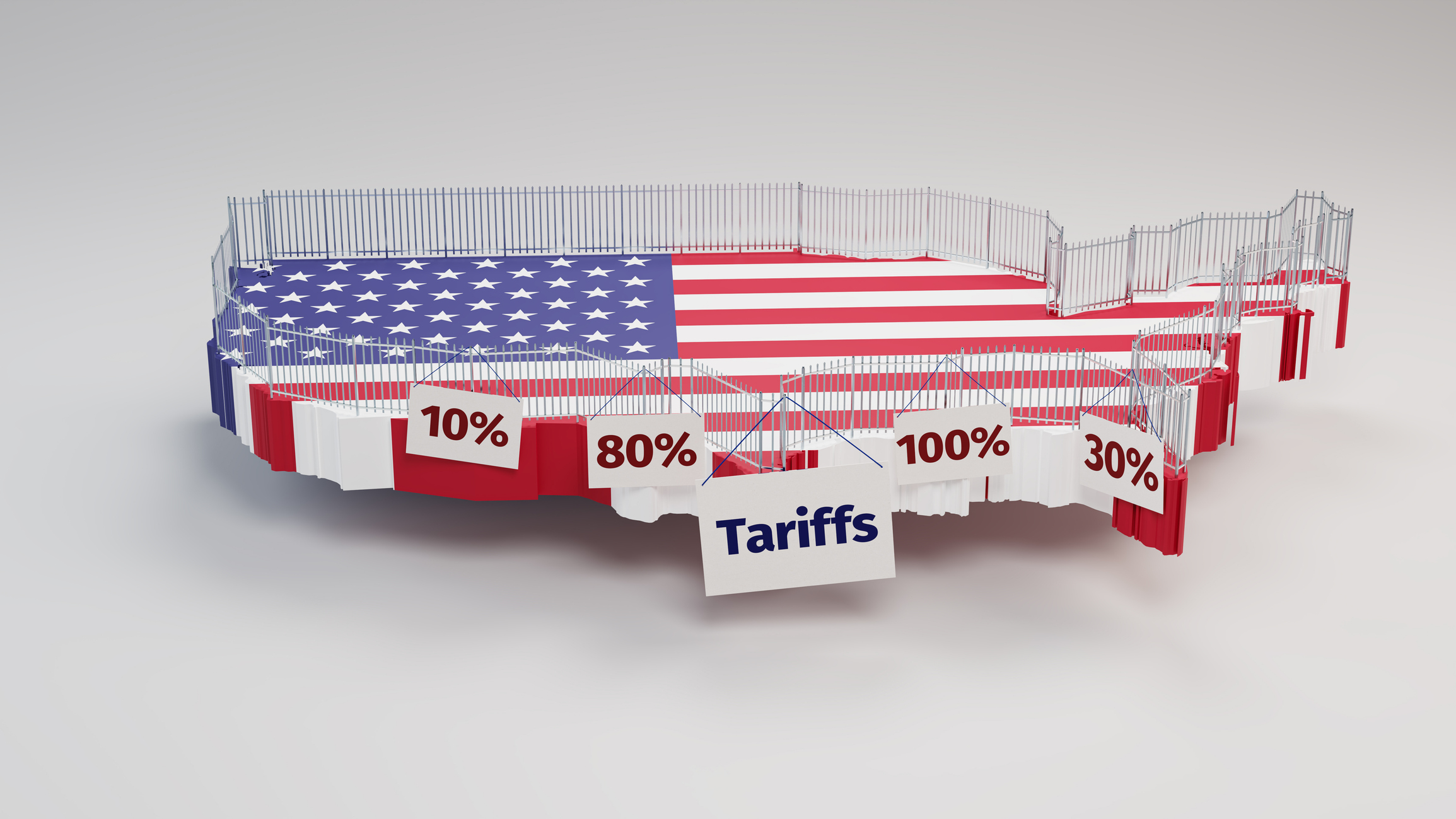Walmart (WMT) Has Found a Winning Formula
The mega-retailer's fourth-quarter results show strong brick-and-mortar performance, still-explosive e-commerce expansion


If December’s reported lull in retail spending was supposed to be a sign of waning consumerism, Walmart (WMT) didn’t get the memo. The world’s biggest retailer posted blowout fourth-quarter numbers, topping earnings and revenue estimates on surprisingly strong same-store sales growth. That sparked a swelling of optimism in shareholders, who extended a strong year-to-date rally in WMT stock.
For the quarter ended Jan. 31, Walmart turned $138.8 billion worth of revenue into per-share adjusted earnings of $1.41. Analysts were only modeling profits of $1.33 per share, a slight improvement on the $1.30 earned a year ago. Sales were up 1.9% year-over-year and topped analyst estimates of $138.7 billion.
The absence of Toys “R” Us on the retailing landscape was a contributing factor in last quarter’s progress, though electronics sales were strong as well.

Sign up for Kiplinger’s Free E-Newsletters
Profit and prosper with the best of expert advice on investing, taxes, retirement, personal finance and more - straight to your e-mail.
Profit and prosper with the best of expert advice - straight to your e-mail.
The crowning achievements were Walmart’s same-store sales growth of 4.2% – versus estimates of a 3.2% improvement – and 43% growth in e-commerce revenue that affirms the company is capable of competing with rival Amazon.com (AMZN).
Indeed, the retailer’s Q4 numbers threw some shade on Amazon’s dominance of the e-commerce arena.
E-Commerce Is Walmart’s Key Growth Driver
Walmart, once largely left behind on the e-commerce front, has spent the past couple of years and more than $2 billion to win back market share.
The first sign that the plan was working in earnest was the 63% surge in online sales recorded during the first quarter of calendar 2017. Although the pace has slowed in the meantime, it hasn’t fallen off tremendously. Last quarter’s 43% increase in e-commerce revenue extends a long-standing, likely sustainable, pace of strong double-digit progress for WMT. For the full year, online revenue growth averaged 40%.
At least some of that sustained growth can be attributed to more, and more thoughtful, e-commerce offerings.
As part of the company’s deeper penetration into the e-commerce arena, Walmart also has acquired higher-end brand names such as Moosejaw and ModCloth. The tactic appears to be working.
“Walmart is successfully broadening its online base of customers and is now attracting both younger and more affluent demographics,” writes GlobalData Retail’s managing director Neil Saunders, who adds, “These are early days, but Walmart is now a serious contender in the online space and presents a much more serious threat to Amazon than it did 18 months ago.”
There’s still lots of room for growth on the online-shopping front, too. While Walmart is now only behind eBay (EBAY) and Amazon.com in terms of e-commerce market share, after recently passing Apple (AAPL), eMarketer reports that the world’s biggest brick-and-mortar retailer still only controls less than 5% of the U.S. e-commerce market.
Perhaps more important going forward, Walmart’s e-commerce arm will be better positioned to add rather than subtract from the bottom line. CEO Doug McMillion commented during the quarterly earnings conference call that repeat visitors looking at a wider assortment of merchandise, as well as shipping costs improving, ultimately will result in better profitability.
While the strong Q4 report answers some questions, it raises others ... not the least of which has to do with the uncertainty surrounding last week’s retail sales report from the Census Bureau.
December’s Retail Spending Report in Question
The U.S. Census Bureau on Feb. 14 indicated that December’s adjusted level of retail spending fell 1.2% from November’s figure. It was the largest month-to-month drop in nearly a decade and coincided with the beginning of what ended up being a record-breaking 35-day government shutdown.
For some cautious observers such as Societe Generale economist Omair Sharif, that backdrop may only be coincidental. He responded to doubts about the alleged invalidity of the report, “It’s certainly possible that we see an upward revision when the January report is released, but it’s not clear to me that we should dismiss this report altogether, and none of what I’ve seen/heard about why today’s report is ‘wrong’ holds much water.”
For most others, however, December’s initial report – which is subject to revision – likely won’t be an accurate status report for most retail stocks.
Pantheon Macroeconomics analyst Ian Shepherdson opined of the December retail spending report, “These data are so wild that we have to expect hefty upward revisions, but if they stand, they are very unlikely to be representative of the trend over the next few months. The consumer is no longer enjoying tax cuts or falling gas prices, but that’s no reason to expect a rollover.”
His take echoed similar concerns voiced by other professionals.
WMT Stock: Looking Ahead
While Walmart is developing an e-commerce arm that could prove to be a true challenge to Amazon.com, the relatively new focus is only part of a much larger effort to reshape the company into a complete omnichannel entity.
As of the quarter ended in December, 2,100 of its 5,355 U.S. stores offered curbside grocery pickup, and roughly 800 offered grocery delivery services. By the end of the year, Walmart anticipates 3,100 offering curbside pickup, and 1,600 stores making grocery deliveries.
Store growth, meanwhile, will take a backseat to more digital initiatives. The company expects to open just 10 new U.S. locations this year, jibing with McMillon’s comment, “We’re excited about the work we’re doing to reach customers in a more digitally connected way. Our commitment to the customer is clear – we’ll be there when, where and how they want to shop and deliver new, convenient experiences that are uniquely Walmart.”
The ongoing melding of offline and online sales efforts, the company believes, will drive overall company-wide revenue growth of at least 3% this year, boosted by 5% revenue growth overseas. American same-store sales are expected to improve between 2.5% and 3.0%. E-commerce sales growth is expected to slow to 35%, on average, this year, though Walmart has topped online revenue estimates more often than not in recent quarters.
The retailer also suggested that operating income would fall slightly this year. But similar to revenues, profits have reliably come in ahead of analyst expectations – in fact, they’ve beaten estimates in 11 of the past 12 quarters.
Tuesday’s advance has driven WMT stock to a well-above-market valuation of 22 times estimates for next year’s profits, and the yield on the stock, at 2.1%, is on the very low end of its 10-year range. But where Walmart shares might be a little lacking in value, they are making up for it via an increasingly optimistic outlook for not just holding off Amazon, but continuing to grow.
Earlier in the month, Nextdoor CEO and Walmart board member Sarah Friar commented, “Seeing the company, particularly CEO Doug McMillon, be willing to lean in on (the advent of online shopping) really impressed me. They’re not going to just sit around. They are going to really get out over the edge of their skis to be a great company for the next hundred years.”
Last quarter’s results underscore Friar’s optimistic assessment.
Get Kiplinger Today newsletter — free
Profit and prosper with the best of Kiplinger's advice on investing, taxes, retirement, personal finance and much more. Delivered daily. Enter your email in the box and click Sign Me Up.

-
 10 Major AI Companies You Should Know
10 Major AI Companies You Should KnowThese 10 AI companies are at the forefront of machine learning. Find out how they’re driving innovation and jostling to be the biggest players in the game.
By Tom Taulli Published
-
 How Baby Boomers and Gen Xers Are Redefining Retirement Living
How Baby Boomers and Gen Xers Are Redefining Retirement LivingBoth generations need to embrace change and leverage real estate as a dynamic asset in their retirement planning. Here's how financial advisers can help, too.
By David Conti, CPRC Published
-
 Walmart's Transformative Ways Spark a 100,000% Stock Return
Walmart's Transformative Ways Spark a 100,000% Stock ReturnWalmart's strategic store expansion and relentless cost-cutting have catapulted its share price over the years.
By Louis Navellier Published
-
 Stock Market Today: Dow Dives 748 Points as UnitedHealth Sells Off
Stock Market Today: Dow Dives 748 Points as UnitedHealth Sells OffA services-sector contraction and a worse-than-anticipated consumer sentiment reading sent bulls scrambling Friday.
By Karee Venema Published
-
 Stock Market Today: Growth Concerns Drag on Stocks
Stock Market Today: Growth Concerns Drag on StocksForward-looking commentary from a major retailer outweighed its backward-looking results as all three major equity indexes retreated on Thursday.
By David Dittman Published
-
 Walmart Is the Worst Dow Jones Stock After Earnings. Here's Why
Walmart Is the Worst Dow Jones Stock After Earnings. Here's WhyWalmart stock is sinking Thursday as the retail giant's dreary outlook offsets a fourth-quarter earnings beat and dividend hike. Here's what you need to know.
By Joey Solitro Published
-
 How Do Tariffs Impact the Stock Market?
How Do Tariffs Impact the Stock Market?Trump's tariff announcement sent shockwaves through the stock market, and there are still a lot of moving parts. Here, we look at what impact tariffs have on the stock market and your portfolio.
By Charles Lewis Sizemore, CFA Last updated
-
 Stock Market Today: Stocks End a Strong Year With a Whimper
Stock Market Today: Stocks End a Strong Year With a WhimperThe S&P 500 notched its first back-to-back 20%+ annual returns since the late 1990s.
By Karee Venema Published
-
 The Best Retail Stocks to Buy and Hold
The Best Retail Stocks to Buy and HoldE-commerce is a growing trend, but most folks still prefer to shop in stores. That makes these dominant retail stocks worth a closer look.
By Louis Navellier Last updated
-
 Stock Market Today: Dow, S&P 500 Hit New Highs on Black Friday
Stock Market Today: Dow, S&P 500 Hit New Highs on Black FridaySentiment was bullish on the final trading session of November, with chip stocks leading the charge.
By Karee Venema Published